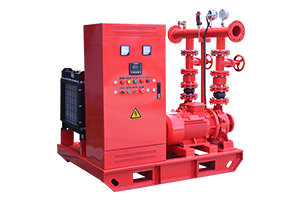How to Perform Weekly Fire Pump Inspections?
Nov 27, 2024
Share:
Performing weekly fire pump inspections ensures the system is operational and ready for emergencies. Here’s a step-by-step guide to carry out these inspections effectively:

1. Visual Inspection
-
Pump Room Conditions:
- Ensure the room is clean, dry, and free of obstructions.
- Maintain proper temperature (at least 40°F or 4°C for diesel pumps).
-
Pump Components:
- Check for any visible signs of wear, damage, or leaks.
- Ensure suction and discharge valves are in the correct (open) position.
- Inspect couplings and alignment for signs of wear or misalignment.
-
Pipework:
- Look for visible corrosion, leaks, or loose fittings in suction and discharge pipes.
-
Electrical Equipment:
- Check for loose or damaged wires.
- Verify that the controller shows “normal” status.
2. Check Diesel Engine Fire Pumps (If Applicable)
-
Fuel Supply:
- Ensure the fuel tank is at least two-thirds full.
- Inspect fuel lines for leaks or damage.
-
Battery:
- Confirm batteries are fully charged.
- Check for clean and tight connections.
-
Lubricants and Coolants:
- Verify oil and coolant levels are adequate.
-
Exhaust System:
- Inspect for leaks or damage.
3. Check Electric Fire Pumps
- Inspect motor casing for signs of damage or overheating.
- Ensure power supply and connections are secure.
4. Conduct a Weekly Test Run
-
Start the Pump:
- Use the manual start feature (or automatic start if testing with system demand).
-
Observe Operation:
- Check for unusual noise, vibration, or overheating.
- Monitor suction and discharge pressure gauges.
- Confirm water flow and ensure discharge is smooth.
-
Controller Response:
- Verify that the controller switches correctly between manual and automatic modes.
-
Record Results:
- Note flow rate, pressure, and other readings for comparison with previous tests.
5. Post-Test Checks
- Reset the system to automatic mode.
- Ensure jockey pump returns to maintaining system pressure.
- Recheck for leaks or abnormal conditions after the test.
6. Recordkeeping
- Document the inspection in a log, noting:
- Date and time of inspection.
- Inspector’s name.
- Observations and readings.
- Any corrective actions performed.
These steps ensure compliance with NFPA 25 guidelines for fire pump inspection, testing, and maintenance. Always consult the manufacturer’s manual for specific instructions related to your fire pump model.






